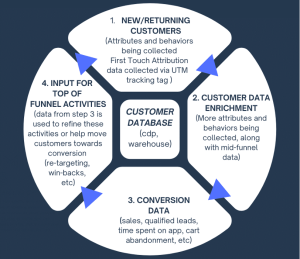As brands, we didn’t use to have to worry so much about a bad customer experience “making the rounds” and damaging our image. Pre-Twitter, pre-Facebook and pre-Every-Other-Social-Media-Platform, how many people could an unhappy customer reach with a negative message about you, anyway? Research puts that number at somewhere between 9 and 15 people.
One bad experience wasn’t going to hurt, right? This is not to say that companies didn’t used to care about the customer experience, or complaints about it. Companies did care. They did address. They did fix. But the situation wasn’t going to be shared far and wide.
In the reality of today’s social media world, a negative experience is going to be right there for everybody to see. Your image can suffer.
The average Twitter user has 208 followers. Facebook friends? The average consumer has about 350. That’s potentially over 550 people seeing a negative message about your B2C brand. Are you B2B? Consider the average of 610 connections per Linked In account these days.
Imagine the spread of the message if even 10 percent of those 550 or 610 folks share a negative post about the experience a customer or client had. And then those folks share from there.
While you certainly have a customer service process to handle complaints and concern, you must also implement a process for damage control on social media. Be your own PR agent. You need to let everyone – not just the client or customer with an issue — know what is being done to solve a problem. Do it in a public and transparent way, using the following 3-step process. (And here are some suggestions for effective social media tools to use in the process.)
Listen
To know if something is going on, you need to be listening in the first place. If you don’t have an assigned social media manager or agency checking your social media every day, make it someone’s job.
The key here is response time. The longer an issue festers, the bigger it is going to grow and the farther it is going to reach. Insert yourself into the situation – even if there is no immediate solution, and you are just getting started on one.
It’s amazing how just knowing that someone is listening and beginning to act, can help soothe and smooth a bad situation for a customer. An even bigger benefit: It shows everybody else watching that you care. That’s good PR.
Bottom lines: Acknowledge. Understand. Promise to solve. And let everybody know you’re acting.
Solve
How you solve an issue comes down to your customer service process (do you have it documented?). You know how to serve your customers best, and how to solve their problems. But as you solve, and once you solve, keep it all public. Post the solution that was implemented. Let the social universe know.
Bottom lines: Problems happen. People understand that. What they don’t understand is ignoring a problem or issue. Play up your solution. And let everybody know.
Follow Up
Up to now, you’ve been reactive. But is it worth stirring up the issue later? The answer is yes. Make it part of your social media process to follow up on solved complaints after a week, or whatever amount of time makes sense for your business.
Bottom lines: It’s fine and dandy to solve issues. Following up shows you care, and that you want to assure a great customer experience the next time around. So ask how things are going, if the customer is still happy. And let everybody know.
Conclusion
Most customers or clients don’t expect perfection. But they do expect action if a situation goes bad. In the public venue of social media, how will everybody else know you’re fixing the situation if you don’t let them know what’s going on?
Listen. Solve. Follow Up. It’s the simple 3-step way to take a negative customer experience and turn the PR positive by letting your other customers, and your potential customers, know that you care and you act.
And, every step of the way, let everybody know!
(199)





